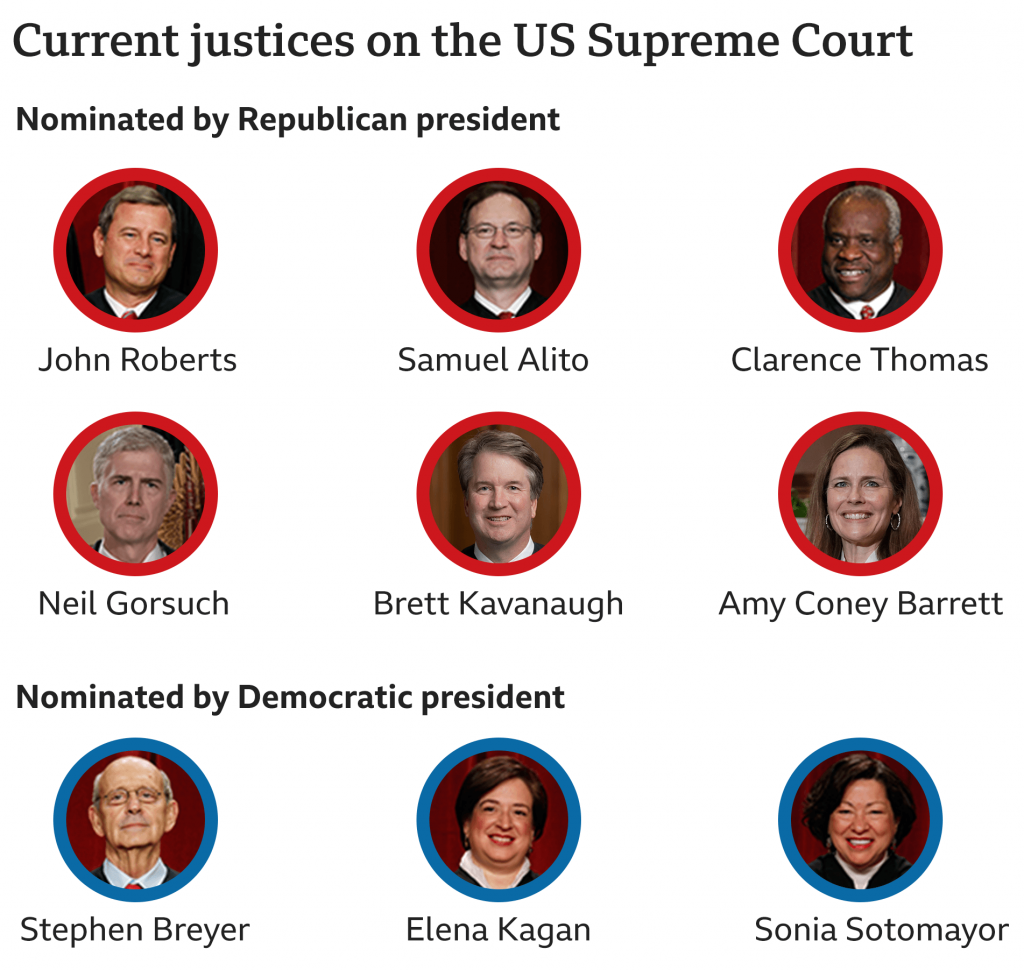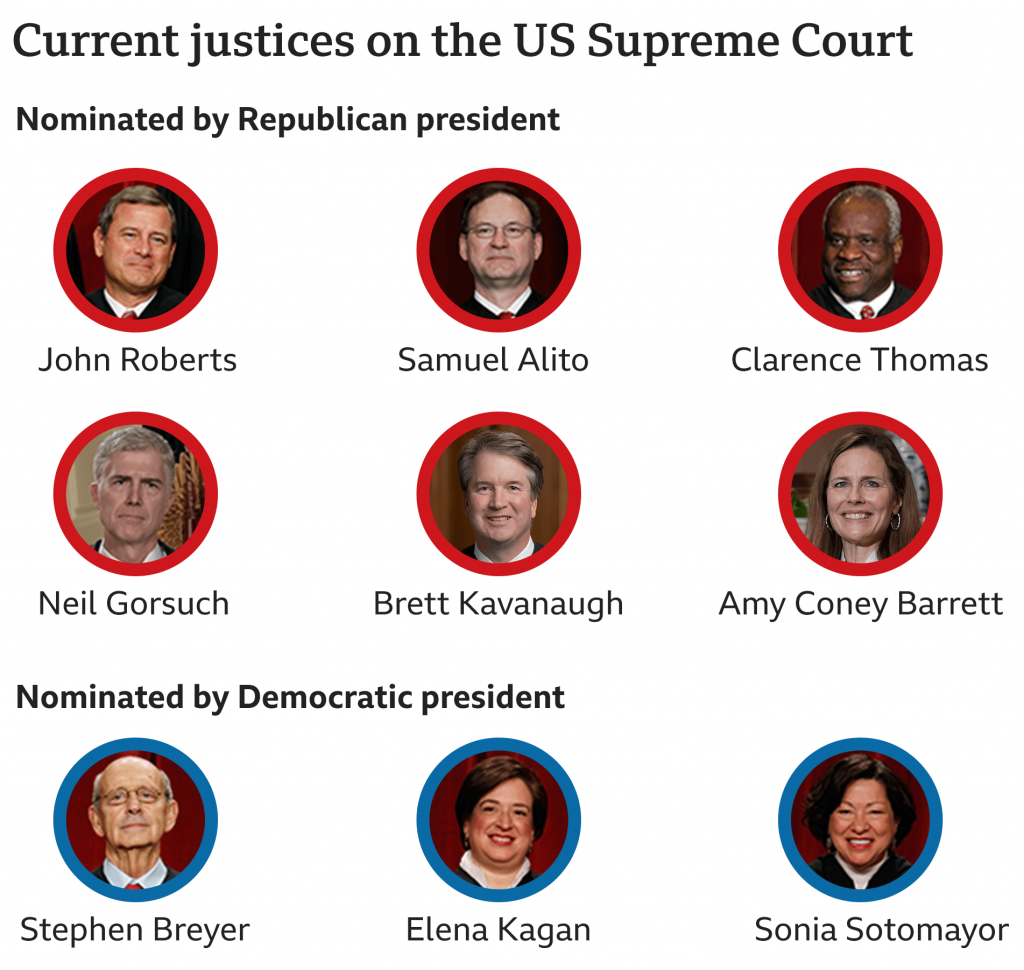Landmark Cases
March 25th, 2021
Hello and welcome back to yet another week at the Supreme Court! This week we will be discussion some remarkably important cases that the Supreme Court has decided over the years and what they mean. First up is Brown v. Board of Education (1954). This is likely a case that many of you are familiar with, but what exactly is it and what does it mean? The question being asked of the Court was whether or not segregation based exclusively on race violates the Equal Protection Clause of the 14th Amendment. The key there is the Equal Protection Clause. A Clause is a single statement or sentence within amendments to the Constitution (Think Right to Free Speech in the 1st amendment). It is quite simple, basically no state or federal law can deprive citizens of their rights of liberty and freedom. The Court determined that separating black and white citizens based solely on color violated black Americans Constitutional rights, and thus enforced segregation was destroyed. Another famous case that many might be familiar with is United States v. Nixon. In light of the Watergate scandal, President Nixon attempted to use one of the powers given to the president called “Executive Privilege”. Executive Privilege is the President’s ability to classify information that he does not want disclosed to the public. In this case, President Nixon attempted to lock information pertaining to his connection to the Watergate scandal behind Executive Privilege which would prevent the Supreme Court or any other court from using that information as evidence in a case. The Supreme Court ruled that the separation of powers does not allow for the President to restrict information in regard to the Due Process (process of being given a fair trial) and that Nixon could not avoid the Court by using the Executive Privilege. In short, he tried to use his powers as the President to hide that he was guilty. That’s all for this week, next week we pick up right here discussing more landmark cases.
Current Cases on the Docket
March 18th, 2021
Hello and welcome back to the Supreme Court. This week, we are looking at a couple of the cases the Supreme Court is considering right now. The Court is unique in that it gets to decide if it wants to listen to a case. So, for example, one of the cases we are looking at is Texas v. California. The case revolves around state travel bans. The state of Texas makes an application to the Supreme Court to see if they will make a ruling on the case. If they decide yes, then the case proceeds and the 9 justices we met the past two weeks will make a decision on it in normal court proceedings. If they decide no, then the case does not move forward at all and the travel ban will remain. Now specifically, Texas v. California is about a California state travel ban that prohibits state-funded or state-sponsored travel to Texas. The reason for this is that California reacted to a Texas law that states that day care providers can deny children that do not align with them religiously if they choose. The goal of California’s travel is to basically make Texas want to rethink its laws regarding religious freedom and the way it affects individuals. The next case is US v. Tsarnaev. That might sound familiar as Tsarnaev is the younger of the two brothers that committed the Boston Marathon Bombing. In the case, they are determining if the District Court made an error in choosing a jury by not asking proper questions, and that the court did not permit all evidence when they were determining if Tsarnaev would get the death penalty. Both of these cases are currently waiting to see if the Supreme Court will hear them, and if the court does decide to, both could have very large implications for the law.
Meet the Justices: Liberals
March 11th, 2021

Hello and welcome back! This week I am going to be covering the Liberal justices. The catch with the liberal justices is that as the Supreme Court currently stands, there are only 3 “liberal” justices. A justice that most recently passed away is Ruth Bader Ginsburg, who has since been replaced by the conservative justice Amy Coney Barrett. Justice Ginsburg was among the most liberal of the justices but not definitely the most liberal. That title is held by Sonia Sotomayor, who was appointed by President Barack Obama. She almost exclusively sides with the “liberal” argument on cases and often writers her opinions with quite a bit of a tone towards arguments that might like easy to answer questions but were meant with resistance by certain justices. The next liberal justice is Elena Kagan, who, while is a liberal justice, does lean towards the middle of the pack. She has written extremely important opinion, including one that made it illegal to use race as a way to draw lines for Congress districts. The last liberal justice is Stephen Breyer, who was appointed by President Bill Clinton. Breyer is one of the oldest justices on the court, and while we are currently under a Democrat as president, there is a strong possibility he retires within the next four years so that Joe Biden may pick another justice. His views, like Justice Kagan, are liberal but more close to the middle ground of the opinions. He seeks to make the law simpler and more easily understood to read at first glance. That’s all for this week. Next week, we will be looking at what cases the Supreme Court is currently ruling on and what they might mean.
Meet the Justices: COnservatives
March 4th, 2021
Welcome back! This week, I will be going over the “conservatize” justices on the Supreme Court. Now, I know what you are thinking, there isn’t supposed to be political leanings among the justices right? That is correct, the justices do not align specifically to one party, but they have ideological leanings, based on their personalities. During the Trump presidency, there has been 3 openings in the Supreme Court, which is three opportunities for a Republican president to pick the justices. The three justices selected during the Trump presidency make up a large portion of the conservative justices. Those justices are Neil Gorsuch, Brett Kavanaugh, and Amy Comey Barrett (ACB). Of these justices, Brett Kavanaugh is the most conservative, followed by ACB and then Neil Gorsuch. The issue with rating ACB, is that since she is such a new justice, she has not done nearly as much work on the Supreme Court, it is more based off of her past statements and positions on issues. The most conservative justice is judge Clarence Thomas, who’s opinions often rest alone as his fellow justices do not always agree with him. Closer to the middle, there are two remaining conservative justices. The first is Samuel Alito who, on certain issues, tends to not agree with his conservative counterparts on the legal reasoning behind his decisions, but still ultimately agrees with the answer they arrive at. The last “conservative” justice is also the most important, Chief Justice John Roberts. He is the leading justice in the court, and while is considered conservative, he often sides with the liberal justices, becoming the courts “swing” vote. This position means when the conservative and liberal justice stick to their guns, Chief Justice Roberts often decides the tie vote. Next week, we will be going over the liberal justices, so stick around!
